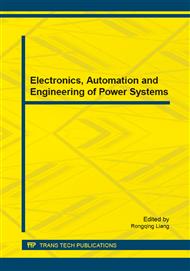p.858
p.864
p.868
p.873
p.877
p.887
p.893
p.897
p.901
The Output Filter Identification of Three-Phase PWM Converter Using Weighted Least Square Method
Abstract:
This paper proposed the Weighted Least Square method (WLS method) to identify the output filter of three-phase PWM converter, which incorporates the signal processing as well as mathematical techniques into conventional Least Square method. It sets different weights to different measurements according to the phase where it locates, based on the discovery of the correlation between accuracy and phase of current. The algorithm is tested in both simulation and experimental environment, and the results validate that proposed method gives accurate estimation in steady state, and can response within 10ms in when grid voltage drops. This method can work under both balanced and unbalanced operating conditions, therefore provides a powerful tool for various control strategies to better understand the operating conditions. Compared with the invasive method, which intentionally inject a series of white noise in the system, proposed WLS method does not bring any turbulence, while compared with conventional Least Square method, it possesses better stability as well as higher accuracy.
Info:
Periodical:
Pages:
877-886
Citation:
Online since:
February 2015
Authors:
Price:
Сopyright:
© 2015 Trans Tech Publications Ltd. All Rights Reserved
Share:
Citation:


